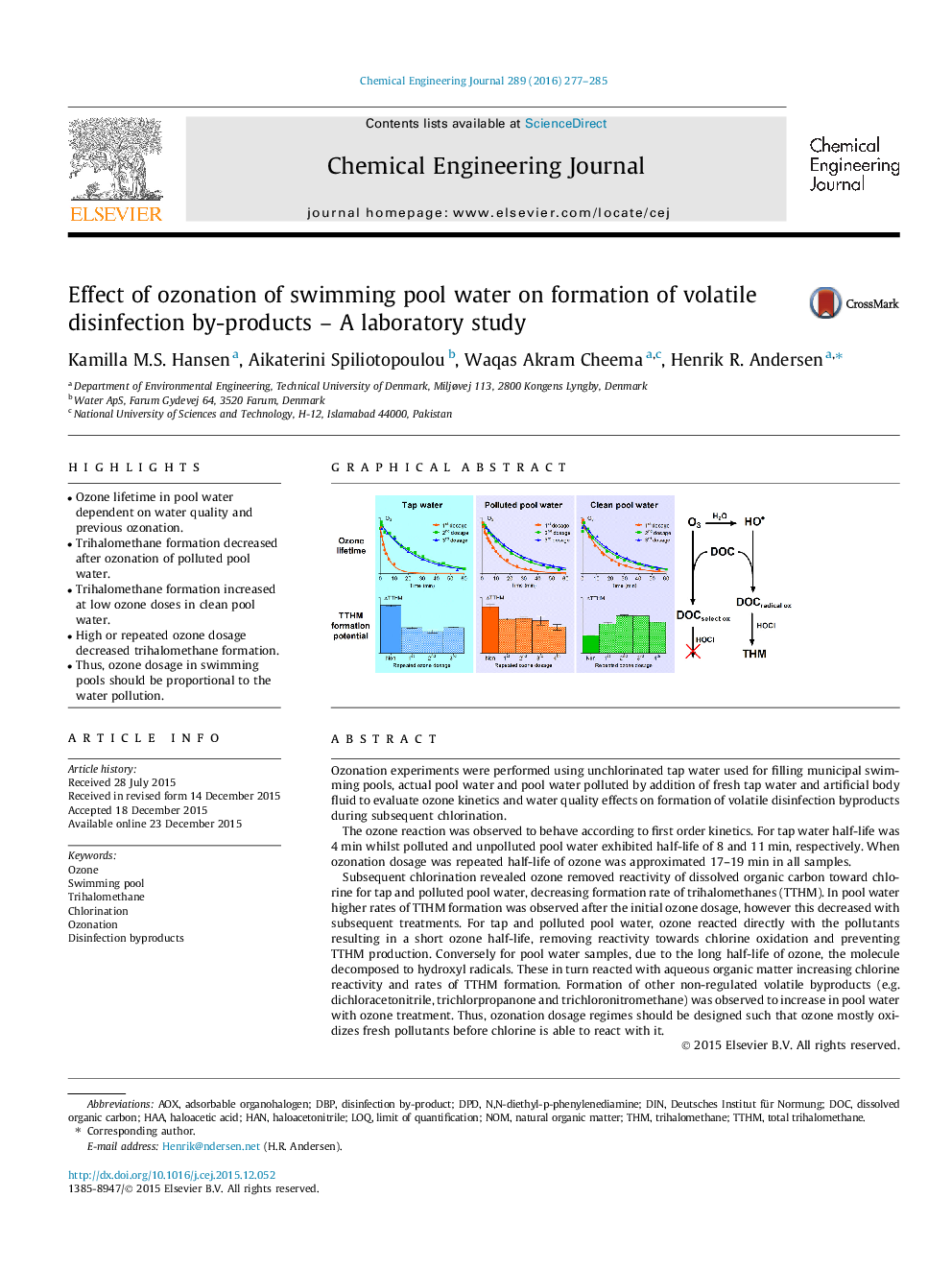| کد مقاله | کد نشریه | سال انتشار | مقاله انگلیسی | نسخه تمام متن |
|---|---|---|---|---|
| 145820 | 456352 | 2016 | 9 صفحه PDF | دانلود رایگان |
• Ozone lifetime in pool water dependent on water quality and previous ozonation.
• Trihalomethane formation decreased after ozonation of polluted pool water.
• Trihalomethane formation increased at low ozone doses in clean pool water.
• High or repeated ozone dosage decreased trihalomethane formation.
• Thus, ozone dosage in swimming pools should be proportional to the water pollution.
Ozonation experiments were performed using unchlorinated tap water used for filling municipal swimming pools, actual pool water and pool water polluted by addition of fresh tap water and artificial body fluid to evaluate ozone kinetics and water quality effects on formation of volatile disinfection byproducts during subsequent chlorination.The ozone reaction was observed to behave according to first order kinetics. For tap water half-life was 4 min whilst polluted and unpolluted pool water exhibited half-life of 8 and 11 min, respectively. When ozonation dosage was repeated half-life of ozone was approximated 17–19 min in all samples.Subsequent chlorination revealed ozone removed reactivity of dissolved organic carbon toward chlorine for tap and polluted pool water, decreasing formation rate of trihalomethanes (TTHM). In pool water higher rates of TTHM formation was observed after the initial ozone dosage, however this decreased with subsequent treatments. For tap and polluted pool water, ozone reacted directly with the pollutants resulting in a short ozone half-life, removing reactivity towards chlorine oxidation and preventing TTHM production. Conversely for pool water samples, due to the long half-life of ozone, the molecule decomposed to hydroxyl radicals. These in turn reacted with aqueous organic matter increasing chlorine reactivity and rates of TTHM formation. Formation of other non-regulated volatile byproducts (e.g. dichloracetonitrile, trichlorpropanone and trichloronitromethane) was observed to increase in pool water with ozone treatment. Thus, ozonation dosage regimes should be designed such that ozone mostly oxidizes fresh pollutants before chlorine is able to react with it.
Figure optionsDownload as PowerPoint slide
Journal: Chemical Engineering Journal - Volume 289, 1 April 2016, Pages 277–285
